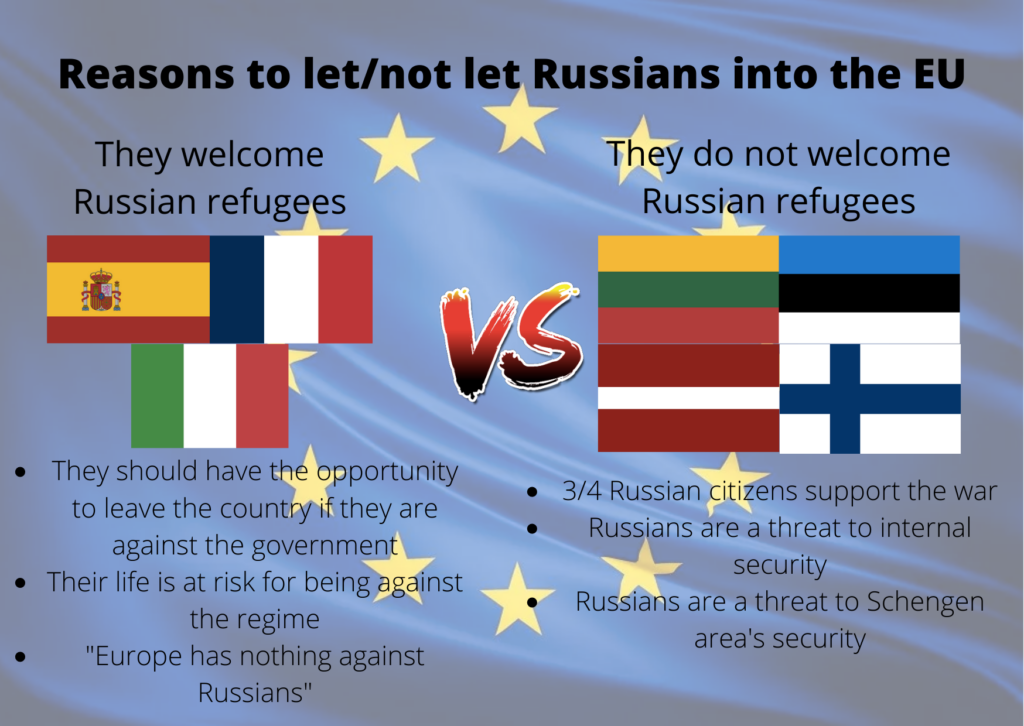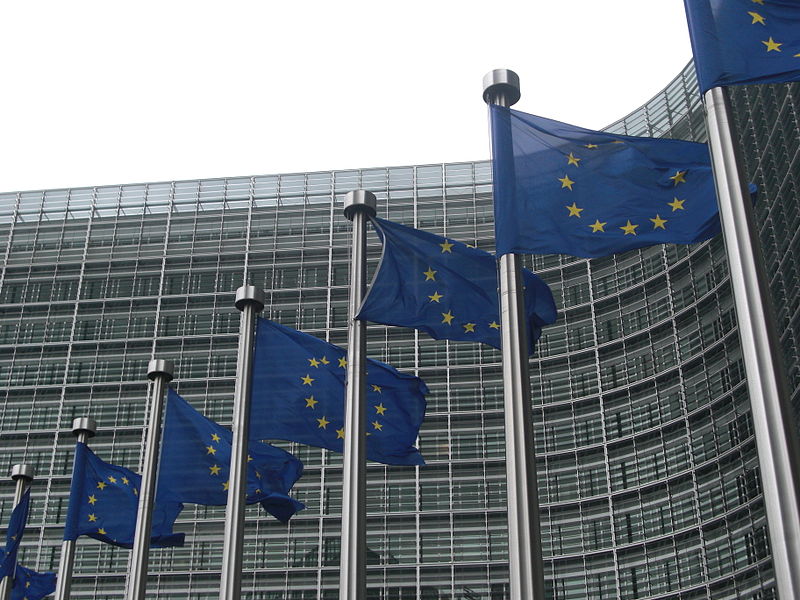Eastern countries such as the Baltic countries or Finland have their borders totally closed for Russians, while Western European countries advocate for letting them in. The European Commission has not yet been able to get those countries on the same side.
By Ander Dacosta, Jorik Simonides and Anton Dahl Andersen
This last week, more than 24,000 Russian nationals have entered the EU, says Frontex, the European Border and Coast Guard Agency. The agency says this is a ‘minor increase’ compared to the week before. Most of the Russian citizens go to Estonia, a country sharing a land border of almost 300 kilometers with Russia. Since the 24th of February – the beginning of the invasion of Ukraine – more than 360,000 Russians have entered Estonia.
Finland has also seen an influx of Russian nationals. More than 500,000 Russians have crossed the Russo-Finnish border since the outbreak of the war.
Within the European Union and Schengen Zone, there is not so much agreement about how to react to this flow of refugees. Where Germany for example presented itself immediately as hospitable, countries like Lithuania, Estonia, Latvia and Poland are not that excited. Finland offers an overland route for Russians to reach the EU, but the government is also reconsidering their policy about Russians who are seeking asylum.
The Baltic countries especially have their Soviet history still fresh in their memories. Therefore those countries are not very keen to welcome Russian refugees. As Lithuanian Minister of Foreign Affairs Gabrielius Landsbergis mentioned on Twitter: “There are other things Russian men can do instead of running away to Europe: protest, disobey or mutiny. Asylum for 25 million draft dodgers is not an option. Russians must liberate Russia.”
The Baltic countries, but also Poland, have moral objections against welcoming Russians who are seeking asylum, but they also worry about their national safety. It is difficult to determine if these refugees are really against Putin, or just do not want to fight in his war by themself.
EU should show openness
For that reasons, the Eastern countries were quite quick with closing their borders. In Western-Europe, there is more possible for escaped Russians. German interior minister Nancy Faeser mentioned for example that “anyone who courageously opposes Putin’s regime and thereby falls into great danger, can file for asylum on grounds of political persecution”, in an interview with Frankfurter Allgemeine Zeitung.
The European Union seems to be following this more moderate line. European Council President Charles Michel said to Politico that the European Union should show “openness to those who don’t want to be instrumentalized by the Kremlin”. Commissioner of Home Affairs Ylva Johansson emphasized that the right for asylum is a fundamental right.
Nevertheless the EU does not ignore the concerns of the Eastern parts of the Union. Johansson admits: “The security threat is real.” Therefore she reviewed the EU policy from the Eastern borders next to Russia. On the 30th of September the Commission presented new ‘guidelines’, regarding visa issuance for Russians. The Commission wants member states to do more security checks before providing visas to Russians. Also, it is not possible anymore for Russians to get a Schengen visa when they stay already in another non-EU country.
But refugee, migrant and asylum policy are not strictly EU matters. These areas fall outside the treaties regarding the work of the EU and policy is thus decided by the member states alone. This doesn’t mean there are no cross-border discussions in the EU or Schengen area, and the EU has previously made statements regarding refugee crises and the like.
An NGO for NGOs
ECRE – the European Council on Refugees and Exiles – is an umbrella organization for more than 100 NGOs from 40 different European countries. Their work is to represent these NGOs in the EU decision-making process. Villads Zahle, the head of Communications at ECRE, says that ECRE is working towards more joint alignment across the European Union on this issue.
“It’s difficult to imagine the EU making legally binding agreements on this issue, but we are pleased with how the Commission pointed out that all member countries have to act within an international legal framework regarding these refugees”, says Villads Zahle.
Villads Zahle and the ECRE won’t give up the fight for a common European legal framework, though. He said the organization has had some revelations after the Russian invasion of Ukraine and the subsequent wave of refugees coming to the EU from Ukraine.
“It just goes to show how much can be done, when member states work together and agree on an issue. It was sensible – even beautiful – and this principle should go for other groups as well”, says Villads Zahle.
New pact on Migration and Asylum
A new deal on this issue is coming up. Titled ‘The European Pact on Migration and Asylum’, this is a revision of the entire EU stance on this subject. The last pact is from 2014, and the European Commission proposed a new one in the fall of 2020. It has not yet been through the halls of the European Council or the European Parliament, but it could potentially change the way Europe handles refugees and asylum seekers.
The pact aims to make sure that the responsibility for asylum seekers is distributed between member states, and aims to make the asylum seeking process more streamlined.
Mandatory – but flexible – solidarity
In the new pact solidarity is mandatory, but flexible. This means that all Member States share the responsibility of the asylum seekers, but can choose from three different forms of solidarity. Relocation, where one member state relocates asylum seekers to another member state, return sponsorship, where one member state helps another member state with returning asylum seekers to their home country, and finally ‘in kind’ contributions. These are contributions to ‘help countries facing migratory pressure’. The pact doesn’t specify how exactly that help is defined, so this will be up to the member states.
If the pact goes through Council and Parliament, which lawmakers think it will at the end of this year, it will also reinforce the position and power of Frontex, the European Border and Coast Guard Agency.
Pact, treaty or legislation?
When dealing with EU matters, it is important to remember that words and their definitions matter. This new pact is exactly just that: a pact. It is not a treaty, and it is not new legislation. A new treaty or new legislation would be binding for the member states. This new pact isn’t. It’s a legal framework under which member states can act. When member states ratify this pact, they’re agreeing to the wording and spirit of the pact, but not binding themselves to any legislation – and different member states could have entirely different approaches and definitions regarding the wording and the spirit, and solving the problems that might arise.


